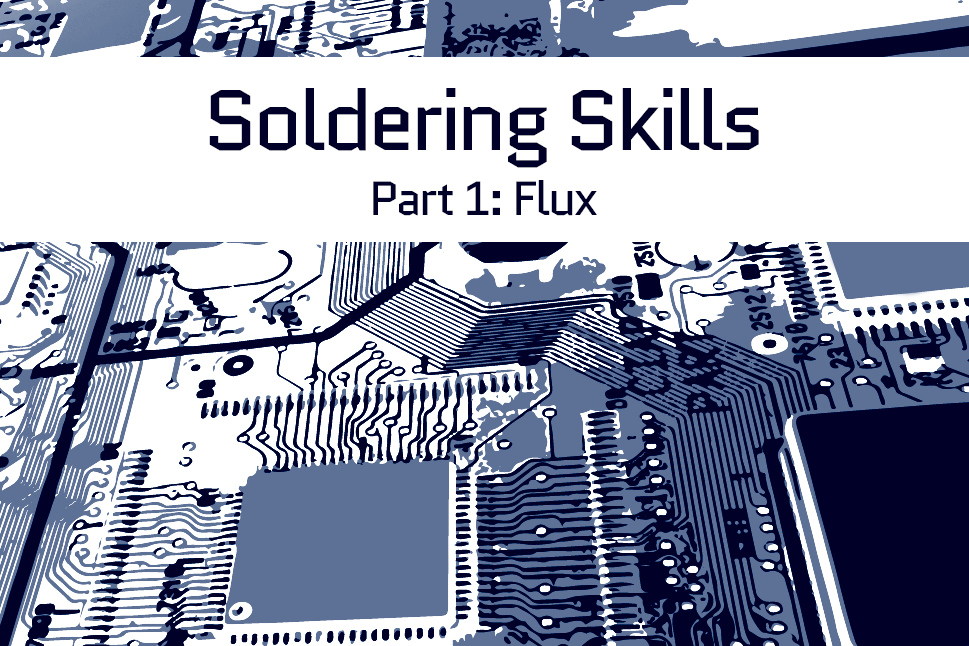TL;DR: Get some flux for soldering, it'll help and is required for a clean install of a mod or repair!
Most often when I find someone who says "I can't solder" it is because they've once tried with a $10 pencil soldering iron and a roll of solder, and expected it to work. Inevitably they ended-up making a mess, getting solder all over the place other than where they wanted it, and destroying more than they set out to fix. I have seen plenty a Game Boy and Game Gear destroyed by folks who were new to soldering.
But, despite that, soldering doesn't have to be scary or uncontrolled. There three super important ingredients to successful soldering and they are:
- Flux
- A good soldering iron
- Some good solder
In this multi-part series I'm going to discuss each of these, and give you the knowledge to help you level-up your soldering skills.
Flux
So what does flux do? Flux is a cleaning agent that removes oxidation from metals so they can be more easily soldered. It also promotes the wetting of the solder, which means that it causes it to more evenly flow.
Specifically for your retro gear, you'll need to be using flux. The gear we're working on in this hobby is quite retro (often times 20+ years young) and has years of corrosion on the copper pads, tin leads, and old solder joints. Flux will help clean that up, giving you good solder flow and yielding a nice joint.
Which flux do I get?
There are various types of flux and knowing which to buy can be a bit tricky. But to be honest, they all work fairly similarly and achieve the same goal. All will help you solder, all will improve your results. But, the devil's in the details so let's define those types.
R Type (Rosin)
This is kinda your go-to flux that has been around forever. It is used for pretty much everything and can be cleaned with Isopropyl Alcohol (IPA). It is non-corrosive and non-conductive. In my experience, these are nasty and messy, but clean-up well with IPA and a cotton bud (read Q-tip) or my preferred foam cleaning swabs (https://www.amazon.com/gp/product/B01HQAU7F4).
Activators (usually acids) are often added to rosin-based fluxes, making them more aggressive in cleaning the oxidation off of metals. There are two types of activators you'll see marketed: RA and RMA.
Type RA flux (Rosin Activated)
These definitely help clean the metal, but since they're aggressive, they can lead to corrosion of your board. You MUST clean these off as they will eventually destroy your board if not removed! They are great for lead soldering.
Type RMA flux (Rosin Mildly-Activated)
Same idea as the above RA flux, but contains no chlorides and is less aggressive than RA flux. Again for leaded soldering. Although you'll likely want to remove it from the board (it's ugly and sticky), it is not necessary and shouldn't destroy your board. I'd remove it.
No-Clean Flux
The idea behind this flux type is that it was formulated for use in PCB industry, and they could leave it on their boards without having to clean it. If you use it, you won't have to clean this flux off your board. Having said that, it is nasty, sticky, you'll want to remove it, and it's super difficult to clean. In fact, trying to clean it off with IPA will do almost nothing other than move it around, and make more of your board sticky. You must clean this type of flux off with flux remover.
Water Soluble Flux
This type of flux typically uses organic compounds and is water-based, so it's designed to be cleaned with warm water. But you MUST clean this off, as it is quite corrosive. Cleaning your board with water is fairly simple to do, but should be done with warm distilled or de-ionized water. It definitely works well, but dries out very quickly on the board so you have to re-apply it often.
Recommendations
It's ultimately your choice which flux you get. I have had great experiences with RMA, RA, No-Clean, and Water Soluble fluxes (fluxeses? fluxii?). In fact, I tend to use all of them in my work based on preference and the job at hand. The one rule is DO NOT USE A FLUX that is for pipe soldering/sweating/welding-- those are for plumbers, not for electronics.
With no more ado, here are my go-to brands and specific formulations:

Kester 186 is classified as an RMA type. This is kinda my go-to flux for when I'm working with leaded solder. Cleans-up great with IPA. Contains halogens so you MUST clean it up to prevent future potential for failure. Especially important to clean off if you're working with lead-free solders, so I tend to avoid if going lead-free (more on that in a future post).

MG Chemicals 8341 is a no-clean type and is in a paste form (more on that next time). This stuff is brutal to clean up and makes a huge mess. But, the solder flows amazingly well and makes short work of even difficult jobs.

Kester 2331-ZX is a water soluble type flux that is organic in nature, is designed for rework purposes, and cleans very easily with distilled water. I use this in a flux pen form and works amazingly well, but dries quickly so you'll find yourself re-applying it if you're not quick. Works well with both leaded and non-leaded solders.
Summary
Since this post got a bit log, I'll break it off here. In my next article I'll talk about the various flux application types, when and where to use each, and get a bunch of pictures to back this up!
Sources:
- https://www.chemtronics.com/essential-guide-to-flux-for-soldering-electronics
- https://forum.digikey.com/t/choosing-the-right-flux-types-for-solder/3302
- https://www.pillarhouse.co.uk/wp-content/uploads/301-Choosing-a-Flux-11-2016.pdf
- https://smans.com/en/knowledgeportal/what-are-halogens-doing-in-a-flux-and-what-danger-do-they-pose/


1 comment
Love it. Looking forward to part 2.